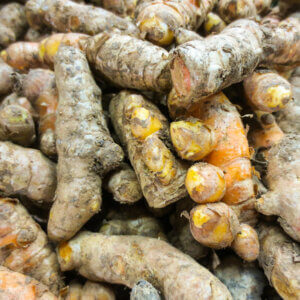Most people feed their animals commercial feed. But I’m not like most people. I know that our diets play a huge role in determining our health and wellness. The same is true for animals.
So instead of commercial feed, my livestock eats fodder. In farming, grains that are allowed to sprout are called fodder. Fodder is similar to the sprouts you might buy at the grocery store.

Fodder has lots of benefits for a homesteader. It’s much healthier for animals than conventional feed. Once you get a fodder system up and running, it will be much more cheaper than store- or catalog-bought feed.
We began raising rabbits and chickens a few years ago and added ducks this past spring. I originally fed my animals conventional, commercial feed, and supplemented their diets with grass and weeds from the garden.
Still, I was concerned with what my animals were eating. I knew that they were getting some amount of GMOs, synthetic fertilizer, herbicides, fungicides, and pesticides from their feed. I wanted to move away from the conventional feed, but organic feed was too expensive.
After a bit of research, I discovered fodder as a substitute. I decided to look around our place and see what I could use to make a fodder system.
Nutritional Benefits Of Fodder
The benefits of fodder are twofold. First, fodder is very nutritious. Sprouting the grains unlocks and amplifies all of the nutrients which are stored within the seed. These nutrients include, vitamins, minerals, proteins, fats, and enzymes.
Second, fodder also helps to minimize anti-nutrients found in grains. Anti-nutrients can cause digestive and absorption issues in animals. Anti-nutrients include gluten and phytic acid.
If you eat your livestock’s meat, milk, or eggs, you’ll also gain from these nutritional benefits.
Fodder Will Save You Money
Fodder will save you money in several ways. For one, it’s cheaper than normal animal feed.
A fifty lb bag of grain can be turned into 300 lbs of feed by turning it into fodder. That’s six times the amount of food! In my area, it cost me one dollar of conventional feed to get one dozen eggs. By feeding the chickens fodder, I can get a dozen eggs for about 15 cents.
How To Build A Fodder System

Here’s how I put together my system. It’s really easy to do, and you can use common household and homestead materials to get started.
- Collect empty milk crates and one gallon plastic milk jugs. Clean them well.
- Soak wheat overnight in water. Use about 1.5 cups of wheat for each milk jug.
- Cut the milk jugs in half. Toss the tops and save the bottoms.
- Drill drainage holes in the bottoms of the milk jugs.
- Put the wheat into the milk jugs and place them in the crates. Layer the grain no higher than a half inch. If you lay it any higher, the grain won’t sprout as well and you may get mold. Don’t feed your animals moldy fodder- they may get sick!
- Stack the crates outdoors.
- Water once every day for about a week. When you see sprouts, you’ll have fodder.
I simply pour fodder out of the jugs and give it to the animals. All of them enjoy it. They eat what’s left of the seed, plus the root mass and the fresh green grass on top.
I’ve used this system for the last two summers. During the cold months, I simply feed the animals grains that I soak overnight.

If you don’t have time, energy, or resources to make your own fodder system, then you may want to invest in one. You’ll earn back the initial cost of the system in feed savings.
I buy my grain from a local farmer. If you don’t have that option, you can always purchase grain in bulk through companies online. I recommend Azure Standard.
I’ve experimented with making fodder from various types of grains including, oats, barley, and wheat. Wheat has worked best for me. Wheat sprouts quickly, so it’s less mold-prone than other grains.
Fodder can feed all of the animals on your homestead. If you raise livestock with special dietary needs, you can supplement your fodder with hay, oyster shells, and vitamin or mineral supplements. Consult with your veterinarian to find out what supplements your animals might need.
Since I switched to fodder, my animals have become healthier and I’ve saved lots of money. I get a priceless good feeling from the knowledge that my animals and children are getting the best possible diet I can afford to give them.
If you want to move away from conventional feeds, I highly recommend growing your own fodder. If you do well, you could even start your own fodder business and become the supplier in your town.
Melissa Hartner of Black Sheep and Honeybees lives with her family on their half-acre homestead in Minnesota.










































Hi. Thanks and Great article on fodder.
Now do your animals only eat the Fodder or is the Fodder used as a supplement since our goal is to go organic and nonGMO?
there are so many varieties of oats…what type for making fodder?